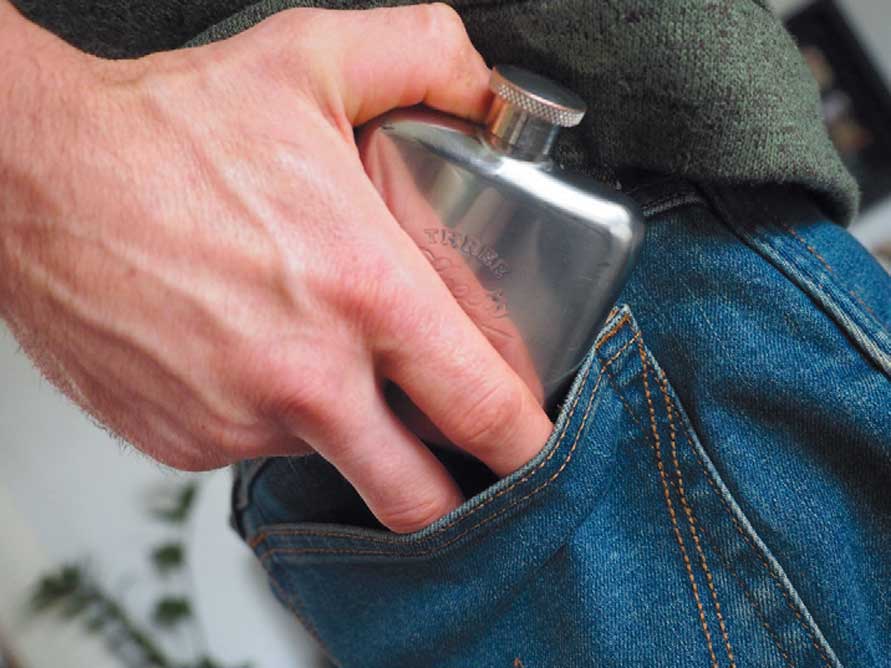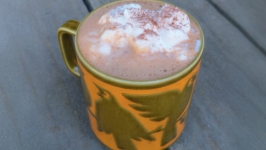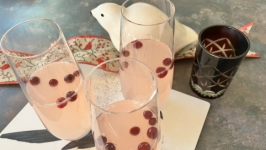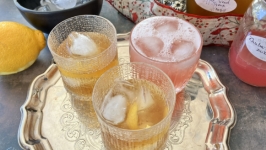Portable Pleasure
Downstream from Lake Iliamna on the Kvichak River, three of us drift in a flat-bottomed boat, taking a break from casting into the wind for rainbow trout. The mood is happy and solemn at the same time. We toast a friend who’s passed, pouring a splash into the river in his honor. Then we remember a friend who’s struggling with his health and toast him as well. The flask, filled with Kentucky bourbon, is a totem to rally around; without it, we’re just three middle-aged guys sitting in a boat with feelings we are unable to express.
I’ve owned flasks for nearly 45 years, falling in and out of use for years at a time as life circumstances evolved—marriage, kids, and careers. Now, the only time I carry one is when I’m fishing, camping, or traveling, where they deliver a small perk, a guilty pleasure that says I am well prepared for whatever life throws at me.
Flasks have been around since the Stone Age, progressively made from animal skins, earthenware, bladders, wood, bronze, pewter, glass, silver, plastic, copper, plastic, ceramic, stainless steel, and titanium.
The most common shape is the hip flask, but there are other, less-familiar varieties such as the boot flask, or a collapsible version tipplers can tuck into their vest or the outside pocket of a backpack. A flask is going to cost you anywhere from $10 for the collapsible kind to more than $350 for a hand-soldered copper heirloom. I own a funky one shaped like a fish that I won at a Christmas party. One brand holds 10 ounces of liquor, two shot glasses, and has a flashlight on one end.
I bought my first flask when I was in my early 20s, a four-ounce stainless steel hip flask wrapped in burgundy leather. It featured a knurled hinged cap to keep the flask and the cap together. My liquor of choice then was peppermint Schnapps.
My first memory of drinking from it was in Anchorage in the late ’70s, at what was called The Sports Arena, now an office supply store on Fireweed Lane and C Street. It housed Anchorage’s only indoor hockey rink. I slid the flask from my back pocket while watching a hockey game, and the Schnapps provided a glow of warmth the feeble arena heating system could not provide.
My second flask is wrapped in the same burgundy leather although it holds a roomier eight ounces, sans hinged lid. It belonged to my brother-in-law, whose death from lung cancer came too early at age 43. My sister felt I should have it. It brings memories of when I was with him in his 14-foot aluminum skiff, catching a 113-pound halibut off Anchor Point, of late-night cribbage games, as well as of his fight with cancer that eventually claimed his life.
I bought my wife an Eddie Bauer Edition flask complete with two Lilliputian stainless steel shot glasses that fit over the top and are secured with a snap on a leather strap. Her first though was smaller and fashioned from pewter. She’d fill its four ounces with Hendrick’s gin and carry it in her purse when we went out to eat. This was pre-kids and when money was tighter than it is now, or maybe she thought she was a bit of an outlaw in those days. She and her sister would order tonic water with a lime twist, then discreetly tip in the gin. That custom is long past, but that flask often appears now in her suitcase when we travel.
A friend was close to retirement from the Alaska Railroad, so I bought him a flask to commemorate it. We’d been known to drink Maker’s Mark while puzzling over life on the banks of our home fishing waters, a gin-clear stream north of Talkeetna. It is a beautiful flask from a Filson catalog, copper, bulbous, and sealed with a cork… and wearing an oilcloth jacket for which Filson is famous. An old school, classic flask, it was the finest I’d seen. I had it engraved with his name and dates of service. When he unwrapped it, he sat speechless for a moment, marveling at an unexpected gift, the personalization driving home that his retirement from nearly 30 years of service had finally arrived.
There’s something special about a flask, whether it’s your own or a gift to a friend. Fill it with a spirit that you enjoy and take it out in Alaska’s backcountry; that’s about as good as it gets.









